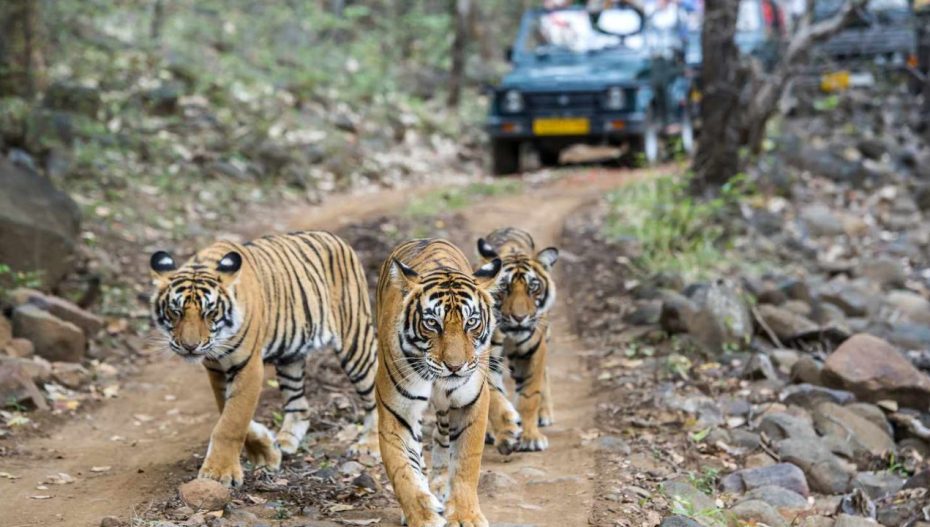The tiger population at Ranthambore National Park (RNP) has been affected by the tigers’ movement to neighbouring reserves in Rajasthan, which has had a significant impact on the sex ratio.
Five male and 11 female tigers have been relocated to several reserves in recent years, including Sariska Tiger Reserve in Alwar, Ramgarh Vishdhari Tiger Reserve in Bundi and Mukundra Hills Tiger Reserve in Kota.
Currently, RNP is home to 24 male and 24 female tigers, alongside 16 cubs. An ideal male-to-female ratio is typically between 1:2 and 1:3 to ensure ecological stability and reduce competition. However, the current equal numbers of males and females in Ranthambore have disrupted this balance, according to a forest official.
The imbalance has resulted in heightened territorial conflicts and deaths of young male tigers, including that of T-2309.
“Territory is not the issue right now. Male tigers typically require a range of 20-50 square kilometres, while the sanctuary spans a vast 1,700 square kilometres. By standard calculations, the male population collectively requires only 720 square kilometres. Female tigers, requiring just 10-12 square kilometres each, share their territory with cubs. However, the imbalance created over time is causing territorial fights,” explained a tiger expert in Ranthambore.
Experts are now suggesting that relocating some male tigers to other reserves could help restore balance. Age-related challenges are also contributing to the situation.
Among the male tigers in Ranthambore, 20 are under six years old, while only two are over 10. Many of the female tigers are older, with an average age of 15 years. Five female tigers are approaching the end of their lifespan, further complicating the situation.
Also Read: ‘Shocking Disrespect’ at Manmohan Singh’s Funeral: Congress Criticises Modi Govt













